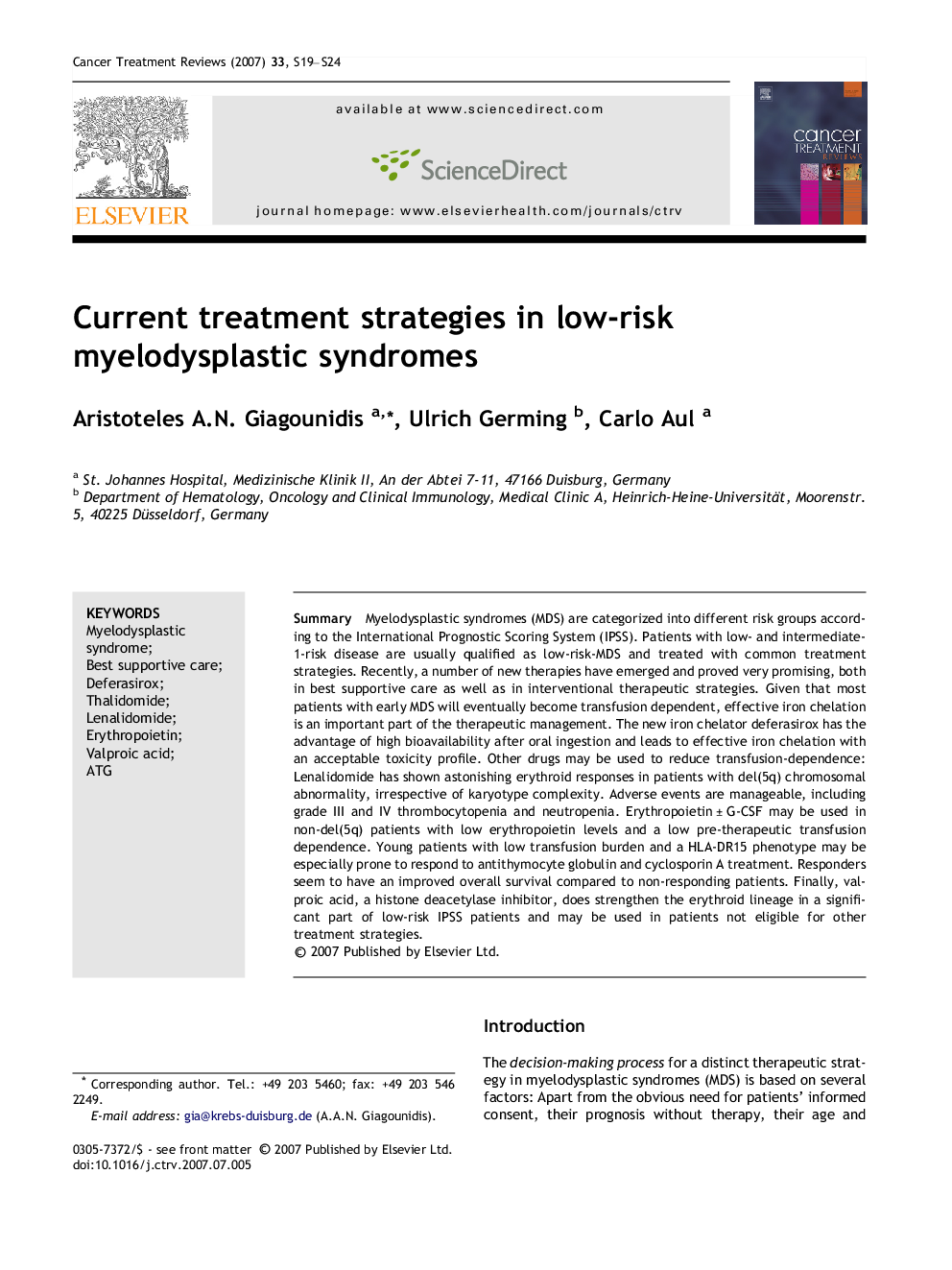| Article ID | Journal | Published Year | Pages | File Type |
|---|---|---|---|---|
| 3980922 | Cancer Treatment Reviews | 2007 | 6 Pages |
SummaryMyelodysplastic syndromes (MDS) are categorized into different risk groups according to the International Prognostic Scoring System (IPSS). Patients with low- and intermediate-1-risk disease are usually qualified as low-risk-MDS and treated with common treatment strategies. Recently, a number of new therapies have emerged and proved very promising, both in best supportive care as well as in interventional therapeutic strategies. Given that most patients with early MDS will eventually become transfusion dependent, effective iron chelation is an important part of the therapeutic management. The new iron chelator deferasirox has the advantage of high bioavailability after oral ingestion and leads to effective iron chelation with an acceptable toxicity profile. Other drugs may be used to reduce transfusion-dependence: Lenalidomide has shown astonishing erythroid responses in patients with del(5q) chromosomal abnormality, irrespective of karyotype complexity. Adverse events are manageable, including grade III and IV thrombocytopenia and neutropenia. Erythropoietin ± G-CSF may be used in non-del(5q) patients with low erythropoietin levels and a low pre-therapeutic transfusion dependence. Young patients with low transfusion burden and a HLA-DR15 phenotype may be especially prone to respond to antithymocyte globulin and cyclosporin A treatment. Responders seem to have an improved overall survival compared to non-responding patients. Finally, valproic acid, a histone deacetylase inhibitor, does strengthen the erythroid lineage in a significant part of low-risk IPSS patients and may be used in patients not eligible for other treatment strategies.
